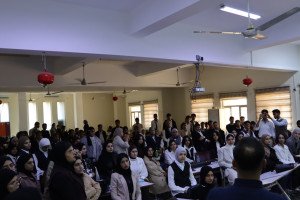
A master's thesis at the University of Basrah discusses (the study of drift as a result of the overlap between the bridge and shoulder support)
a master’s thesis at the College of Engineering at the University of Basrah discussing (the study of drift as a result of the interference between the bridge and shoulder support)
The thesis presented by the student Nour Al-Huda Adnan Mohsen dealt with the procedure of laboratory work under conditions of subcritical flow without any
Sediment loading (clear-water condition) using physical models from five different supports
(circular, rectangle, lenticular, rounded rectangle, and acute) and three shoulder shapes (rectangle with vertical walls,
A rectangle with a semi-circular end, a rectangle with walls inclined at an angle of 45°), and using the dimensional analysis technique, the effect of many important variables on local erosion was studied, including the effect of the intensity of flow, Freud's number, Depth of run-off, distance between shoulder and strut, and effect of bottom material particle size, three sizes were used
Different from regular sand and its (dso) value was equal to (0.3, 0.44, 0.63 mm).
The aim of the thesis is to calculate the greatest erosion depth around the bridge shoulder and the adjacent beam and to clarify the effect of the erosion interference between them.
The thesis concluded that there was a clear increase in the erosion depths when the flow intensity and Froude number were increased, while the increase in the depth of the runoff and the size of the bottom material particles had an opposite effect on the erosion. When comparing the forms of the pillar, it was found that the lowest erosion depths were around the lenticular figure, while the greatest erosion depths were recorded at the rectangular pillar.











